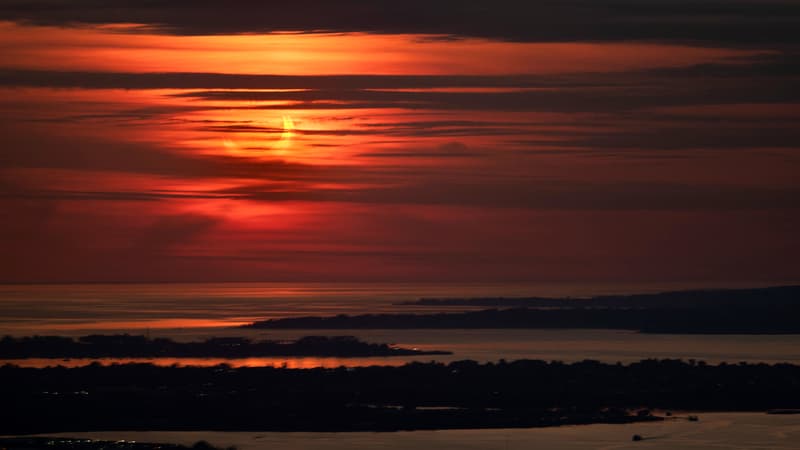On Tuesday, France will have the opportunity to find itself in the shadow of a new partial solar eclipse. Or “the most beautiful of celestial phenomena”, as described by the Institute of Celestial Mechanics and Ephemeris Calculation (IMCCE) that reports the event on its site. In each eclipse, some questions arise as so many imponderables. How big will it be? Can we serve everywhere in the territory? How long will it last? And what instruments will be needed to make the most of it?
a changeable date
First of all, if the eclipse fixes our appointment, it is variable. As the IMCCE reveals on its website (delivering the schedules in accordance with Coordinated Universal Time, to which we would have to add 2 hours to find the time of our clocks), the event will last a little less than 2 hours for everyone, but it will be they start and end in different time slots. Thus, in Paris and Metz, we will be able to look up from 11:12 a.m., when in Strasbourg it will be a matter of waiting at 11:13 a.m. or even at 11:27 a.m. in Perpignan.
The occultation of a section of the Sun will last 1 hour 42 minutes for Parisians, but it will last 10 minutes more for Lorenses, and it will even be visible for 1 hour 54 minutes in the capital of Alsace. However, the tip of Finisterre will only have 1h18 of less light ahead. It is 50 minutes to an hour after starting that the twilight will be deepest.
The Grand Est in the front row
Observe then: if the Moon will mask a part of the sun over the country, the veil will be unequal according to the residence of the curious. Thus, the IMCCE has detailed the degrees of obscuration according to the regions. It is in a northeast arc, and especially in the Far East, that he will be most assertive. Thus, the degree of obscuration will be 19.5% in Strasbourg -its zenith for France- or even 18.4% in Metz and 17.2% in Lille, 14.4% in Dijon or 13.7 % in Paris.
In other places, we will quickly reach derisory thresholds. If we still observe percentages of 11.8% in Lyon or 11.7% in Nice, these will fall to 6.2% in Quimper, 5.7% in Perpignan, 5.4% in Toulouse… and even to the sad 3.5% in Pau.
A risk of injury
But never mind the darkness. The hobbyist must be well equipped if he wishes to be able to look in the direction of the sun. Erwin Dehouck, professor-researcher from Lyon, also remembered it a week ago through his Twitter account Le Planétologue.
“I remind you that any observation of the Sun (with or without an instrument) must be done with a suitable filter and in good condition, to avoid any risk of damaging the retina! If in doubt, go to an astronomy club,” he said.
Otherwise, the reckless person exposes himself to a risk of eye injuries, that is, burns. The risk is all the greater when the damage is initially painless. Generally speaking, it is recommended not to watch the eclipse for more than a few minutes.
Surrounding yourself with the right instruments has another virtue: they will simply allow you to see the eclipse. Indeed, it will remain invisible to the naked eye, as scientific mediator Pierre Henriquet pointed out on Twitter. “To the naked eye, there will be no visible decrease in brightness (at least 96% occultation is needed to notice it),” the specialist wrote.
horizon 2026
numerama therefore, it has more precisely listed the appropriate equipment to attend the eclipse in complete safety. We can stand behind a telescope equipped with a solar filter or glasses dedicated to eclipses. However, the pair must be new (its properties may decrease over time) and have the CE label, indicating alignment with European standards in this area.
Tuesday’s solar eclipse is likely to be only moderately spectacular, as it will only be partial. On the other hand, as the IMCCE mentions, the eclipse of August 12, 2026 has something more exciting: overall, it will present, among other things, a degree of obscuration of 92% in Paris and even 96% in Marseille.
Source: BFM TV


